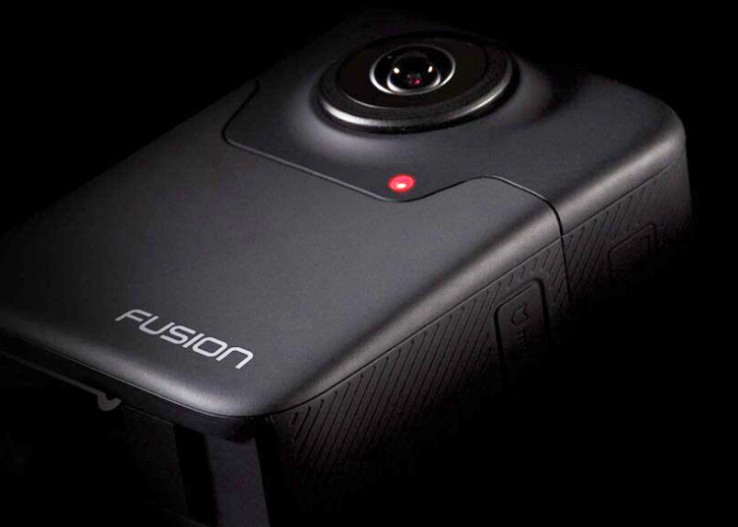GoPro today announced the Fusion, a camera capable of capturing spherical video for use in VR and standard video formats through a software solution. The camera will be released this fall. GoPro has yet to name the price. If nothing else GoPro is becoming a camera company again.
The Fusion shows that GoPro is going back to its core competency in creating hardware. Action cameras existed before GoPro. But GoPro provided a better complete solution and the market responded by making the company top-selling vendor. GoPro likely hopes the same thing will happen with the Fusion and the rest of the spherical camera market.
Specific details are still a bit light since the camera will not be released until the fall. Even the images released by GoPro are clearly carefully composed to reveal more about the camera’s intended use rather than specifics about the camera. We even boosted the levels of the photo above to reveal a bit more.
The company says in a press release that the Fusion records 360-degree video at 5.2K30 and features a mode called OverCapture that lets users go back and carve out a standard video file from the spherical footage. Essentially, GoPro is building a camera that lets users record literally everything and then select the best framing later.
GoPro has built similar solutions in the past that involved mounting several GoPros into a rig that positioned the cameras to capture every angle and software then stitched the footage together. But with GoPro cameras costing hundreds of dollars each, these rigs are expensive. The Fusion will likely be less expensive than these rigs.
There are several other spherical cameras on the market though none have made a big splash. They range in price from a few hundred dollars to a couple thousand. GoPro’s advantage could be the software that lets users produce a standard POV-looking video from the captured footage. Traditionally videos captured by spherical cameras have a fish-eye look, which can be off-putting and distracting.
GoPro is opening a beta program this summer to get the Fusion in the hands of creative users. The company hopes this program will help further refine the user experience prior to releasing the camera on the general market. This is a smart move. The expectations are different and could help reduce negative reactions once the camera hits stores.














